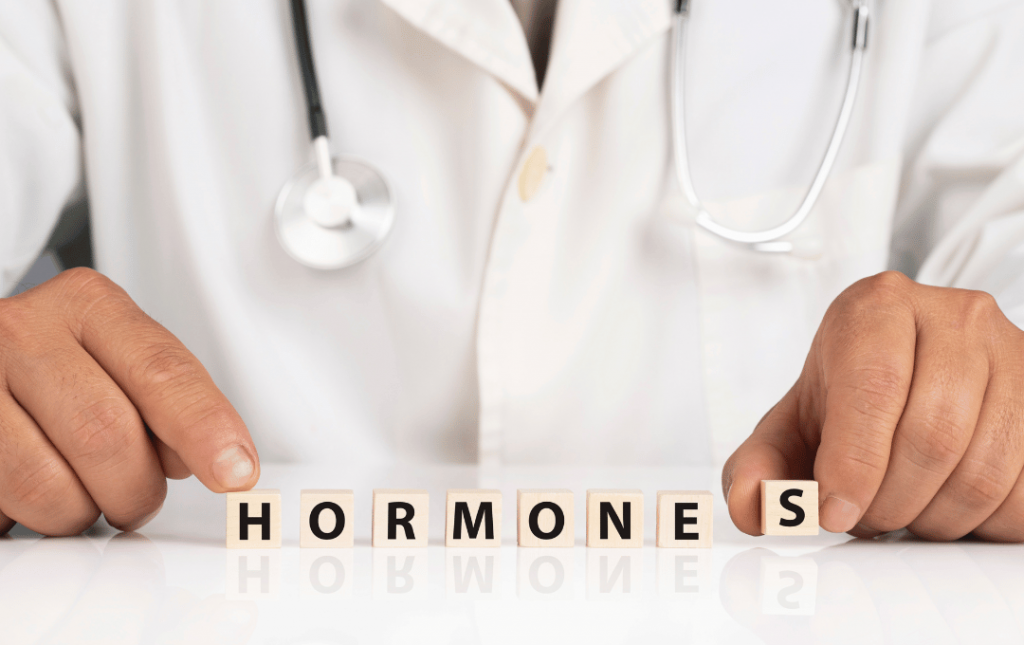Whether it’s hyperthyroidism, menopause, or changes in testosterone, hormonal imbalances can significantly impact your vascular health and cause PAD-related symptoms. Understanding hormonal fluctuations and how they affect the body can help lower your risk of serious vascular conditions like peripheral artery disease (PAD).
Both men and women can experience hormonal changes that increase their risk of developing PAD. Knowing the risks associated with hormones and vascular health can help you recognize when it’s time to consult a vascular specialist.
USA Vascular Centers offers comprehensive vascular screenings, using ultrasound imaging to examine the health of your arteries and veins, checking for potential blockages or abnormalities in blood flow that could indicate conditions such as PAD. Early detection and diagnosis can help you stay proactive about your vascular health.
How Hormones Affect Vascular Health
Hormones maintain the body’s internal balance. They help regulate the metabolism, manage your body’s response to stress, and maintain regular bodily functions. Several hormones work directly with the vascular system, including:
- Estrogen and Progesterone: Both women and men have estrogen and progesterone. Fluctuations in these hormones can increase the risk of blood clots, which can lead to deep vein thrombosis (DVT). They can also cause changes in blood volume, blood pressure, and blood flow.
- Testosterone: Changes in testosterone levels can cause higher LDL cholesterol (“bad cholesterol”) levels and lower HDL cholesterol levels (“good cholesterol”), leading to plaque buildup in the arteries. Testosterone imbalances are more common among men but can also occur in women.
- Thyroid Hormones: Changes in thyroid hormones can increase blood pressure and put patients at an elevated risk of stroke, heart attack, and hyperthyroidism.
It’s important to note that hormones’ role in vascular health is complex. For some patients, hormone changes may not directly contribute to their condition. An article from the American Journal of Physiology suggests more research is needed to confirm hormones’ impact on vascular health.
If you are experiencing issues with consistent leg pain and mobility or are experiencing other symptoms of peripheral artery disease, consult a vascular specialist for an evaluation.
Hormonal Changes and Peripheral Artery Disease (PAD)
Hormonal changes, such as menopause or testosterone decline, are linked to an increased risk of developing PAD.
Peripheral artery disease (PAD) is a progressive disease caused by plaque buildup in the arteries. When plaque accumulates, it restricts the flow of blood, oxygen, and nutrients. When left untreated, PAD can cause pain and discomfort in the lower extremities.
When women go through menopause, their estrogen levels decline. This can lead to elevated LDL cholesterol levels, leading to plaque buildup in the arteries. A similar response can occur when testosterone in men decreases.
Hormonal imbalances can cause unwanted inflammation or contribute to arterial plaque buildup. If you’re experiencing hormonal changes and wonder if you are at risk for PAD, take our risk assessment quiz to see if you should schedule a vascular screening at USA Vascular Centers.
Common Symptoms of Vascular Health Issues Related to Hormonal Changes
Here are a few common changes you may experience with hormone imbalances and vascular health.
- Blood Pressure Fluctuations: Hormonal changes can strain your blood vessels, leading to inconsistent blood pressure.
- Cold Extremities and Leg Pain: Changes in hormones can reduce blood flow and impact circulation, leading to cold limbs, pain, and cramps. These are common symptoms of peripheral artery disease but can also be caused by changes in cortisol, estrogen, and thyroid hormones.
- Fatigue: Insulin, thyroid, and adrenal imbalances can cause extreme fatigue and muscle weakness.
Hormone fluctuations and changes in vascular health can have overlapping symptoms. Scheduling a consultation with a vascular specialist can help you determine the cause of the symptoms and provide an accurate diagnosis.
Diagnosis and Non-Surgical Treatment Options for PAD
If you’re at risk of developing peripheral artery disease or worry that changes in hormones may cause vascular health issues, consider scheduling a vascular health screening. Regular screenings can prevent the development of PAD-related issues, and early detection can prevent your symptoms from worsening.
If you’re diagnosed with peripheral artery disease, your vascular doctor may recommend a minimally invasive treatment. These treatments can slow the disease’s progression and protect you from serious health consequences such as heart attack and stroke. These FDA-approved procedures include:
- Angioplasty: A balloon is inflated inside the artery and condenses the plaque against the artery wall.
- Stent Placement: After an angioplasty, a mesh stent is placed into the artery to keep it propped open.
- Atherectomy: A tube with a specialized tip is inserted into the artery to remove plaque from the body.
Schedule a Consultation With USA Vascular Centers
More research is needed to confirm a connection between hormones and vascular health overall. As your body changes with age, regular vascular screenings can help you stay ahead of potential complications.
USA Vascular Centers provides comprehensive vascular screenings and personalized treatment plans to help you stay proactive about your health.
Call us at 888-773-2193 or schedule an online consultation to learn more.
Frequently Asked Questions
WHAT HORMONE INCREASES BLOOD PRESSURE?
Changes in adrenaline, cortisol, and aldosterone can cause increased blood pressure and shifts in blood flow.
HOW DOES AGING AFFECT CIRCULATING HORMONES IN THE VASCULAR SYSTEM?
Hormones like testosterone, estrogen, insulin, and the growth hormone decline with age. As these hormones decline, you may experience increased blood pressure, blood circulation, or other vascular-related symptoms.
WHAT HORMONES AFFECT VASCULAR HEALTH?
Progesterone, estrogen, and testosterone fluctuations can impact the blood vessels and reduce blood circulation. Adrenaline, cortisol, and aldosterone can also cause changes in blood pressure.



